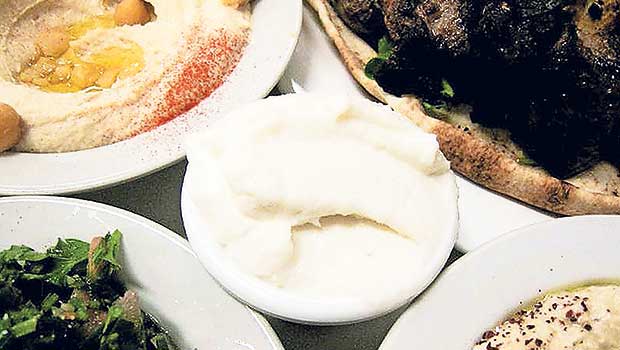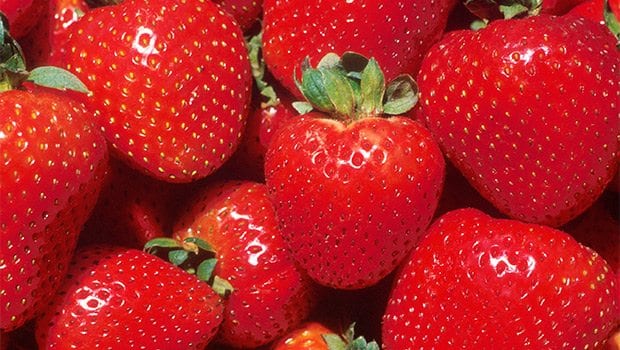Pass the salt, please
Americans consume more than twice the quantity recommended

Sodium, more commonly known as salt, can make some foods taste so much better, but it doesn’t do much for one’s health. Excess salt, especially when paired with reduced amounts of potassium, can increase the risk of high blood pressure. This can start a chain reaction with unfortunate results.
High blood pressure increases the risk of stroke, heart attack, heart failure and kidney disease. Twenty-eight percent of the cases of kidney failure, which requires dialysis or kidney transplant, are attributed to high blood pressure.
It’s not that sodium is bad for you. The body requires it to function properly. Sodium helps transmit nerve impulses and assists in muscle contraction. But you can have too much of a good thing.
Just a spoonful
There is a misperception that you would have to consume great quantities of salt to surpass the daily recommended limit, but actually, a little goes a long way. Below are the approximate amounts of sodium in milligrams in a given amount of table salt:
¼ tsp salt = 575 mg sodium
½ tsp salt = 1,150 mg sodium
¾ tsp salt = 1,725 mg sodium
1 tsp salt = 2,300 mg sodium
Source: American Heart Association
The American Heart Association recommends limiting salt intake to 1,500 milligrams (mg) a day for older adults, particularly African Americans and those with high blood pressure. That amounts to a scant 2/3 teaspoon a day. Yet, according to the Centers for Disease Control and Prevention, the typical American consumes 3,400 mg a day, or more than twice the recommended amount.
There is a misperception that easing off the salt shaker will do the trick. But, as noted in a report published in the Journal of the American College of Nutrition, only 6 percent of sodium comes from adding salt at the dinner table. Another 5 percent comes from salt added while cooking. The major culprits are packaged, processed foods and foods served in restaurants, which account for more than three-fourths of one’s sodium intake. For instance, it is possible to consume more than 1,200 mg of sodium with just one cheeseburger at a fast foods restaurant.
The problem is that, even when trying to limit the daily intake of salt, the odds are stacked against you. So many foods contain salt, but one has to carefully read labels to detect the ingredient. Some foods are obvious. Salty snacks like potato chips and pretzels are easy to spot, but in many other foods it’s not so easy.
Most people do not realize that they are getting a good dose of salt in their morning cereal, but several cereals contain 250 mg of sodium in one half-cup serving. Cereals are but the tip of the iceberg. Top sources of sodium in the diet are breads and rolls, cold cuts, pizza and soups.
Even foods that don’t taste salty contain sodium. Much of the raw chicken or pork purchased at supermarkets has been injected with a sodium solution. Some salts occur naturally. Cantaloupe, honeydew melon and grapes contain a small percentage of sodium as do broccoli, carrots and bell pepper. According to the U.S. Food and Drug Administration, two medium stalks of celery contain 115 mg of the mineral. All of these foods, however, account for a minimal percentage of the daily sodium intake. The nutritional values of fruits and vegetables, such as potassium, fiber and vitamins, far outweigh the scant salt content.
Food labeling
There’s a kind of sleight of hand in the description or labeling of foods. The focus may be more on fat content or the number of calories, thereby diverting attention away from sodium. Yet, foods labeled as “healthy” can be chock full of salt. For instance, a half cup of small curd cottage cheese can contain over 450 mg of sodium. One serving of “98 percent fat-free oven roast turkey breast” contains only 25 calories and one gram of fat, but 250 mg of sodium. Doubling the serving, which is typical for a sandwich, does little to the fat and calorie content, but approaches one-third of the daily limit of salt.
Sodium in food is hard to avoid. That makes it a challenge to limit its intake, but it is possible. Limit consumption of processed foods, such as processed turkey and bacon; eat a diet rich in fresh fruits, vegetables and whole grains. Use herbs and spices to flavor foods and eat sparingly frozen meals and vegetables with sauce. Read the Nutrition Facts labels. Products that are low sodium contain 140 mg or less per serving; very low sodium, 35 mg or less. Sodium-free products contain less than 5 mg per serving.
New research is emerging that large amounts of sodium each day may not be as harmful as previously thought, and that too little consumption may actually be damaging. It will be a while before consensus in reached on this debate. However, there is strong agreement that these findings do not pertain to people with high blood pressure. Limitation of salt consumption for this group of people remains strongly advised.
The taste for salt is acquired. Slowly decrease your use of salt and your taste buds will gradually adjust.







